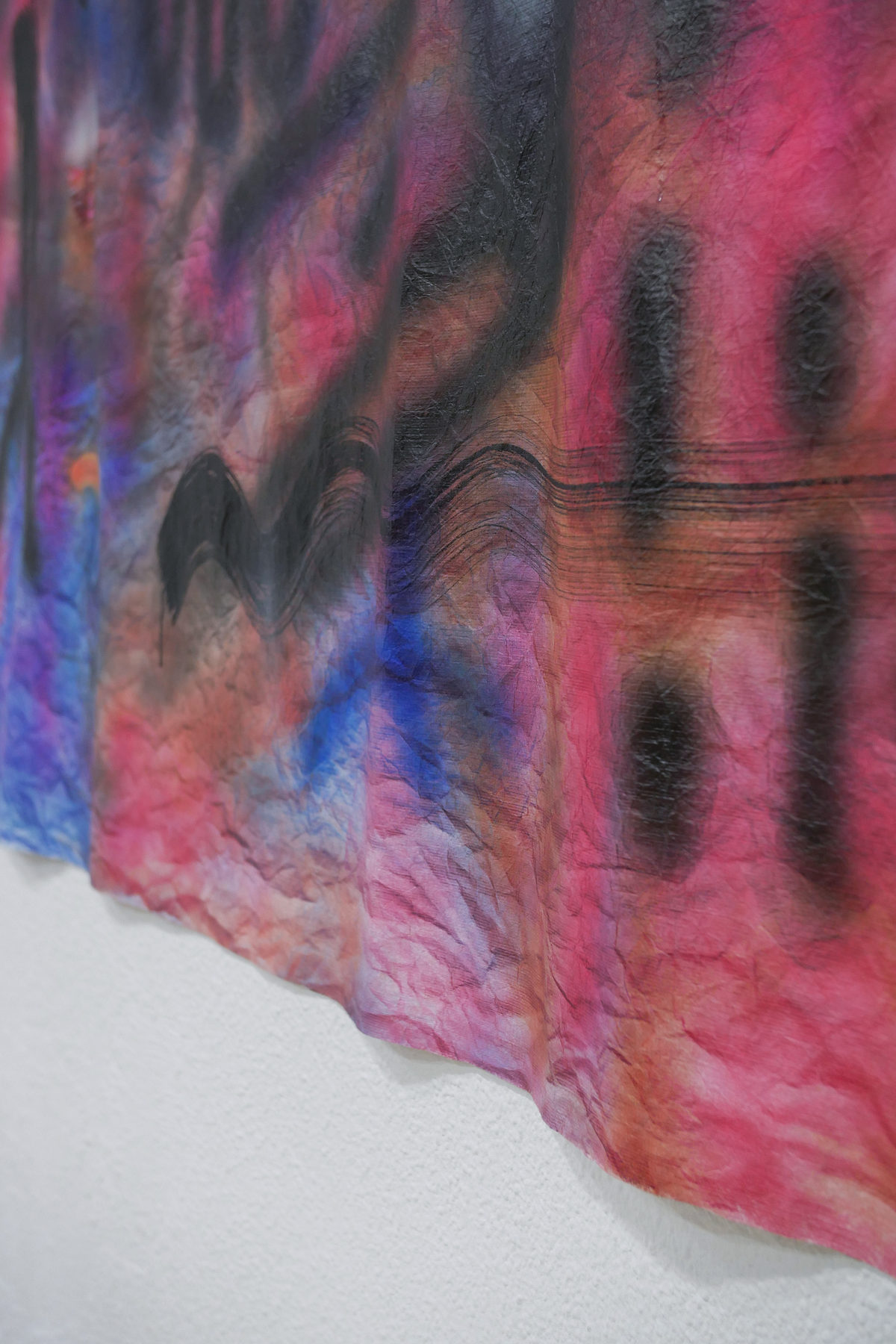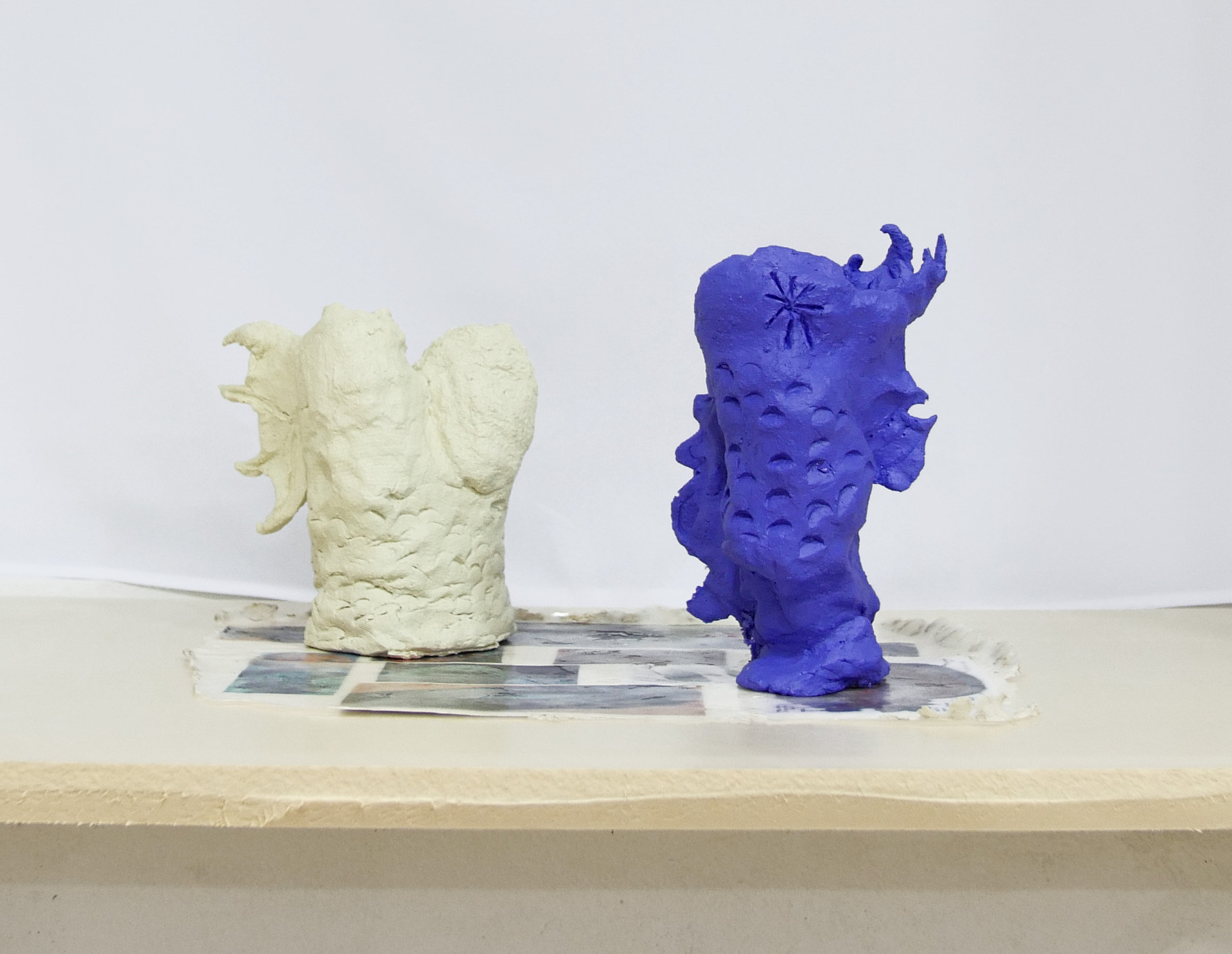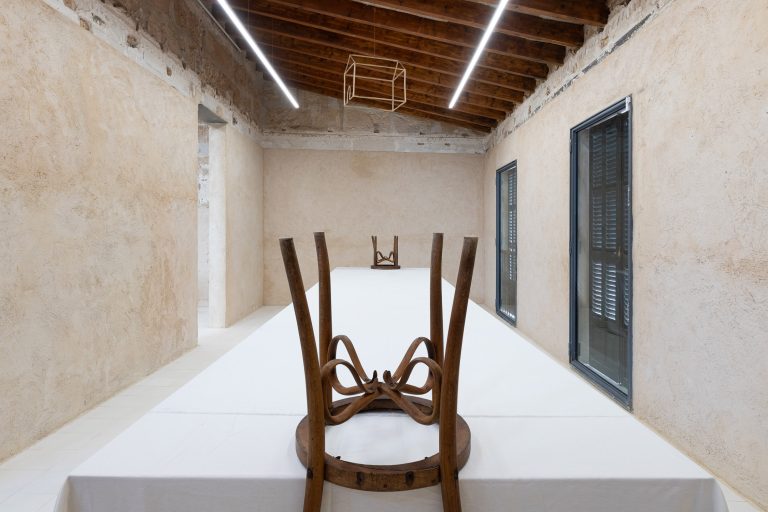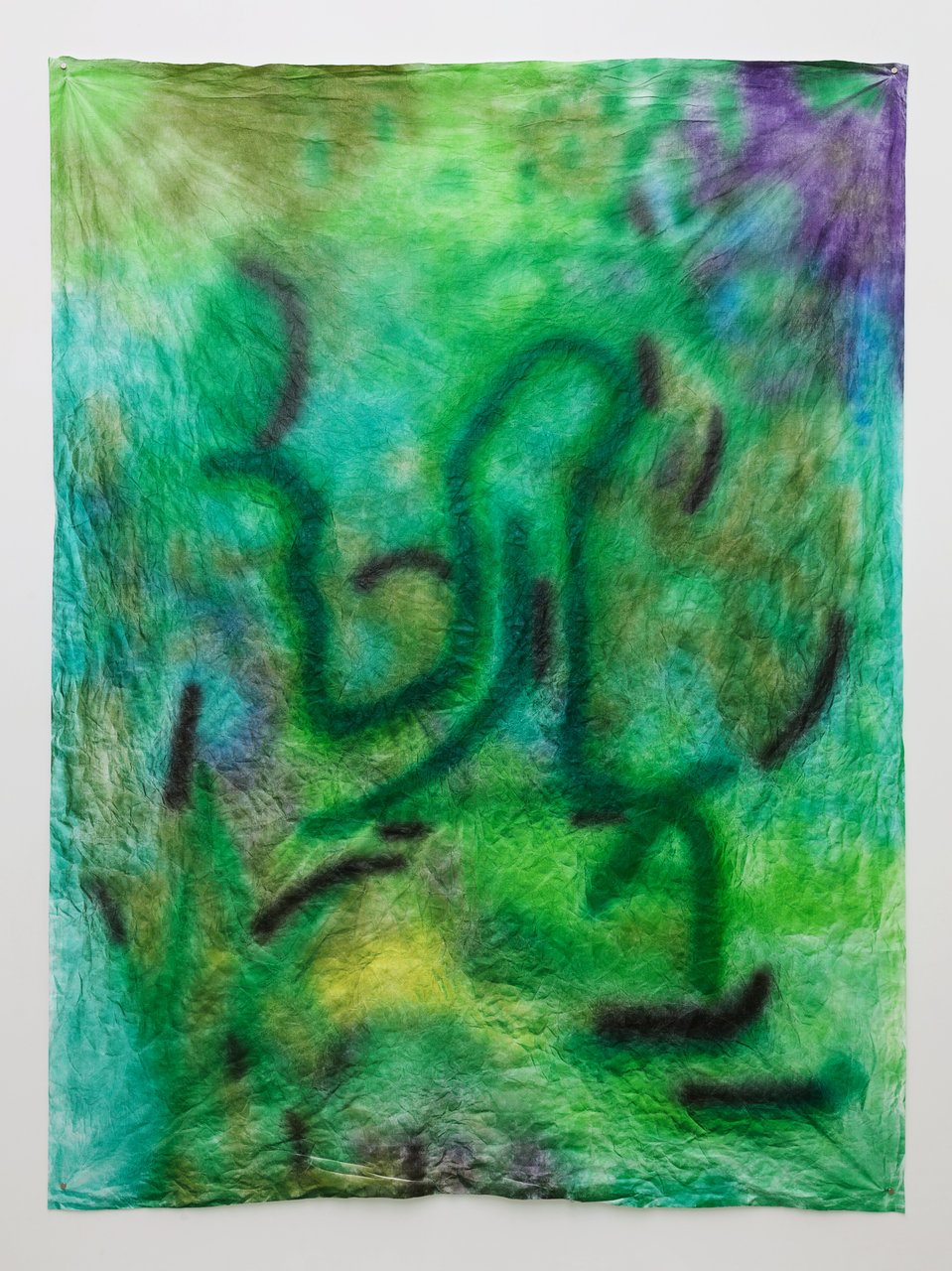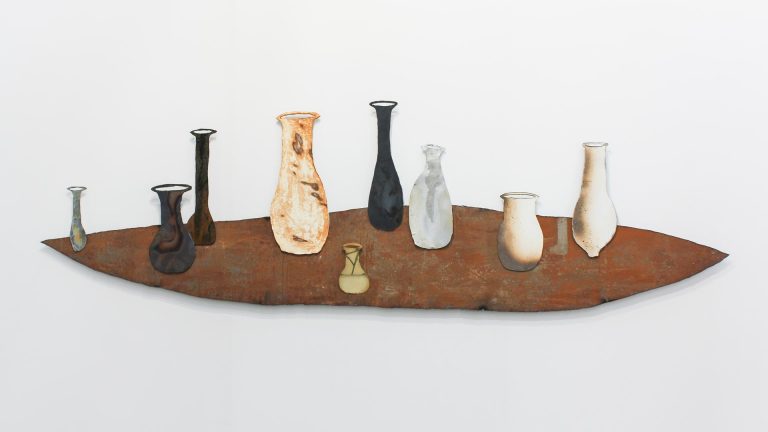Artists: Katharina Fengler, Karlos Gil, Mariana Portela Echeverri, Adam Ulbert, Tom Volkaert
Exhibition title: Serpents Things of Light
Venue: Yaby, Madrid, Spain
Date: February 17 – March 3, 2017
Photography: Carlos Fernández-Pello, all images copyright and courtesy of the artists and Yaby, Madrid
In August 1991, some radioactive frogs escaped a government lab in Oak Ridge, Tennessee. Around a hundred of them were found hopping away from the contaminated pond that was their home, and even though the frogs weren’t dangerous unless eaten, their escape still caused quite a commotion back then. The frogs had become contaminated from the mud of a half-acre holding basin for waste water from the lab’s nuclear research during the 1940s and 1950s and had stayed there up until that summer. After the escape episode, the lab decided to install “frog fencing”, a fine mesh screen, about three feet high, that would keep the threat of those green glowy creatures safely marked off.
Some time before that, Bernard Palissy, the famous sixteenth century ceramicist, found in stagnant water rather a site of generation. Amidst the putrefaction of organic bodies, between firm ground and liquid overflow, laid the prolific habitat of amphibian life. It is for his rustic-style, aquatically-themed pottery that Palissy is best known. Ponds were the main source of inspiration for his ceramic plates, which insistently depict insects, fish, frogs and serpents of various kinds. Palissy’s preferred subjects were always the riskiest: mostly venomous frogs and serpents, being the viper, as well as the most lethal, the most beautiful live form that could be molded. Himself also a prominent naturalist, his written work reflects a productive relation between the risks of practice and the gains of knowledge, a circular relation between plastic experimentation and technical, scientific insight. His celebrated discovery of the secrets of the brightest glazes came precisely from this sort of exposure to the threats of nature: one had to reach out blindly, sinking both hands into the darkest of muds, even at the risk of pulling out a viper or a radioactive frog —“I started to look for enamels like a man who gropes in dark shadows”.
The transformative potency contained in natural, organic forms —the forms of the evergoing processes of evolution, putrefaction and generation that Palissy imagines — is squeezed out of clay. The sinuousity of curling snakes appears echoed in ornamental guise, and pertains to visual delight, fascination or disgust, as much as it does to scientific knowledge. The unknown, the monstrous in nature is served on shiny plates, even if, like frogs in Tennessee, it could be hard to digest. But the chemical formula of that bright enamel comes from no other place than the ingestion of contaminated frogs. Sometimes some light sprouts from the humid darkness of a pond, may it be the dim light of radioactive glow off the green back of a disoriented frog.
Katharina Fengler, Highlighting/Contouring #1 (It Was A Rainy Day But I Got Things Done), 2016
Katharina Fengler, Highlighting/Contouring #1 (It Was A Rainy Day But I Got Things Done), 2016
Katharina Fengler, Highlighting/Contouring #1 (It Was A Rainy Day But I Got Things Done), 2016
Tom Volkaert, Tour De Salami #4, 2017
Karlos Gil, Untitled (Listener Fatigue), 2017
Karlos Gil, Untitled (Listener Fatigue), 2017
Karlos Gil, Untitled (Listener Fatigue), 2017
Karlos Gil, Untitled (Listener Fatigue), 2017
Mariana Portela Echeverri, En la Boca del Estómago, 2017
Mariana Portela Echeverri, En la Boca del Estómago, 2017
Mariana Portela Echeverri, En la Boca del Estómago, 2017
Adam Ulbert, Thalassa I. / subliminal intruder (Object #1, Object #2), 2017
Adam Ulbert, Thalassa I. / subliminal intruder (Object #1, Object #2), 2017
Adam Ulbert, Thalassa I. / subliminal intruder (Object #1, Object #2), 2017






